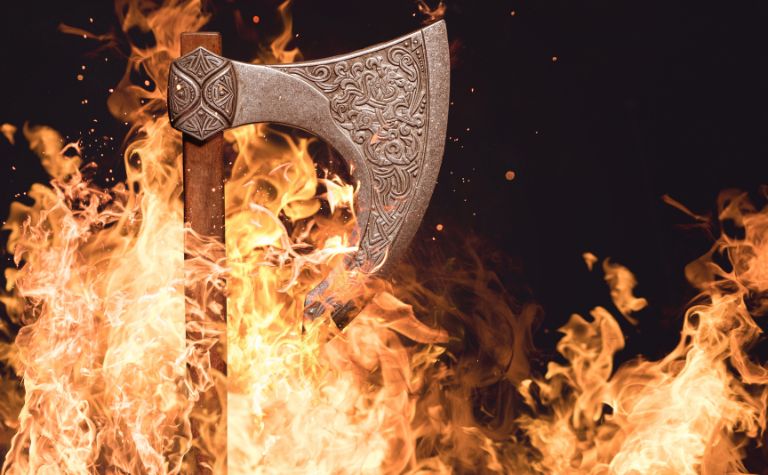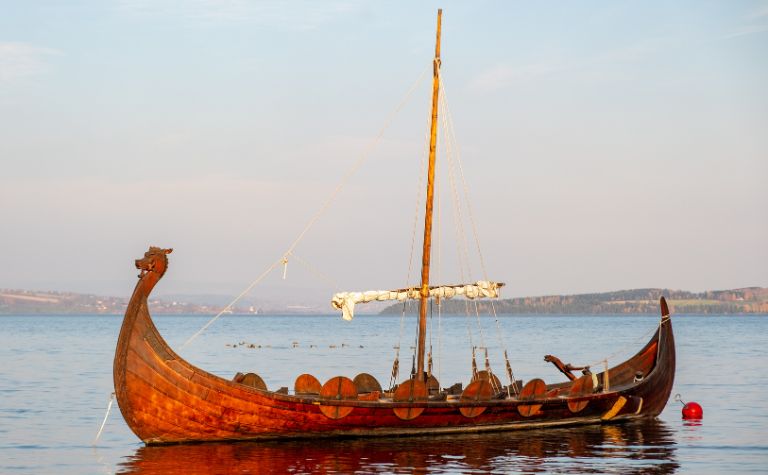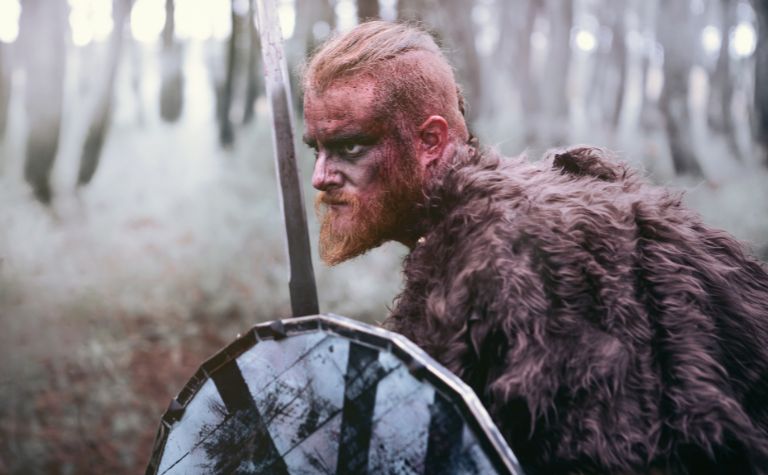Explore the world of Vikings through two different lenses: the cut and uncut versions of the television series.
This article dissects how each version presents the narrative and characters, offering insights into their distinct storytelling approaches and how these differences impact the overall viewing experience.
The cut version of Vikings offers a streamlined, fast-paced narrative, focusing on main characters and plotlines. Episodes generally have the equivalent of a PG-13 rating.
The uncut version, however, provides depth and complexity with extended scenes and subplots. Episodes generally have the equivalent of an R rating due to violence, language, sex, and nudity.
Also, see Did Vikings Perform Human Sacrifices? to learn more.

An Overview of the Cut Version of Vikings
The cut version of Vikings is more than just an edited television series.
It represents a carefully crafted narrative where every second on screen is optimized to enhance the viewer’s experience and sustain the momentum of the storyline.
When discussing the cut version, it’s important to understand that the editing decisions are not arbitrary.
The process involves selectively choosing scenes that contribute to the main plot, building up the characters, and maintaining the pacing of the series.
As a result, this version encapsulates the essential parts of the narrative while leaving out certain elements that may not directly contribute to the storyline.
One key characteristic of the cut version is its focus on the principal plot points and character arcs.
It leans heavily on scenes that propel the narrative forward or reveal critical aspects of the characters’ development.
Consequently, scenes involving extended dialogue, in-depth exploration of secondary characters, or slower-paced sequences may be reduced or removed entirely.
The decision to remove certain elements is not necessarily a comment on their quality or significance. It’s more about efficiency and coherence.
With typical television timeslots or streaming platform standards in mind, the creators must ensure that each episode fits within these constraints while still offering a compelling and coherent story.
For instance, a lengthy dialogue between two characters may provide interesting insights, but if it doesn’t advance the plot or contribute to the main character arcs, it could be cut from the final version.
Similarly, a beautifully shot scene showing the Viking village at dawn might add aesthetic value, but if it doesn’t tie into the narrative in a meaningful way, it may be left on the editing room floor.
In essence, the cut version of Vikings prioritizes a streamlined narrative that engages the audience and keeps the storyline progressing at a consistent pace.
This emphasis on delivering an engaging, easy-to-follow narrative has played a significant role in the show’s ability to captivate and maintain a broad audience.

Detailed Examination of the Uncut Version
The uncut version of Vikings offers an extended, more intricate viewing experience, providing enthusiasts with a deeper dive into the rich world of the series.
Additionally, the content is often more graphic and gratuitous.
This version, unlike its cut counterpart, incorporates additional scenes, extended dialogues, and plot nuances that contribute to a more comprehensive understanding of the show’s narrative and characters.
While the cut version focuses on a streamlined narrative, the uncut version ventures beyond this limitation.
It includes scenes that, while not essential to the central plot or main characters, offer deeper insights into the Vikings universe.
These additions could range from intimate dialogues between characters that reveal more about their motivations, to detailed depictions of Viking rituals or traditions, offering viewers a broader perspective of the show’s historical and cultural context.
For instance, in the uncut version, viewers might find scenes exploring the dynamics between secondary characters, revealing subplots that are only hinted at in the cut version.
Likewise, larger-scale battle sequences might be presented in their full, unedited glory, providing a more immersive and intense viewing experience.
Also, the uncut version might delve deeper into the socio-political intricacies of Viking society, with scenes depicting council meetings, private discussions, or even quiet moments of contemplation from the characters.
These sequences, while not crucial to the main narrative’s progression, offer a fuller understanding of the world within which the characters live and operate.
However, these additions come with their own trade-offs.
While some viewers might appreciate the deeper character insights and additional narrative layers, others might find that these additions disrupt the pacing, making the narrative seem slower or more convoluted.
Despite these potential drawbacks, the uncut version presents a unique opportunity to explore Vikings in a more detailed and comprehensive way, making it a valuable choice for viewers desiring a deeper connection to the show.

Comparison and Evaluation
Having explored the characteristics of both the cut and uncut versions of Vikings, we can now dive into a more detailed comparison and evaluation.
While both versions present the same fundamental narrative, the differences in content and pacing between the two have a significant impact on the viewing experience.
Firstly, the narrative structure and character development in the two versions vary considerably.
In the cut version, the narrative is streamlined and fast-paced, with a strong focus on primary characters and central plotlines.
Each scene is integral to the plot progression, ensuring that the narrative moves forward at a steady pace.
As a result, the cut version tends to be more gripping and straightforward, making it an excellent choice for viewers seeking a clear, concise narrative.
On the other hand, the uncut version offers a broader, more layered portrayal of the Vikings universe. It includes extended scenes and additional subplots that add depth and complexity to the narrative.
These elements can provide viewers with a deeper understanding of the characters’ motivations, relationships, and the socio-cultural dynamics of Viking society.
While this version might seem slower due to the additional content, it provides a more nuanced and immersive viewing experience, particularly for viewers interested in diving deep into the intricacies of the narrative.
In terms of audience response, both versions have their advocates.
Some viewers prefer the cut version for its clear, concise storytelling and the ease with which they can follow the central narrative.
Conversely, others find the uncut version more satisfying due to its depth, character development, and the additional context it provides.
Ultimately, the choice between the cut and uncut versions of Vikings boils down to personal preference.
For a viewer seeking a straightforward, fast-paced narrative, the cut version might be more appealing.
But for someone interested in a more comprehensive exploration of the Vikings universe, the uncut version might be the better option.
Both versions have their merits, and both contribute uniquely to the vibrant world that is Vikings.
